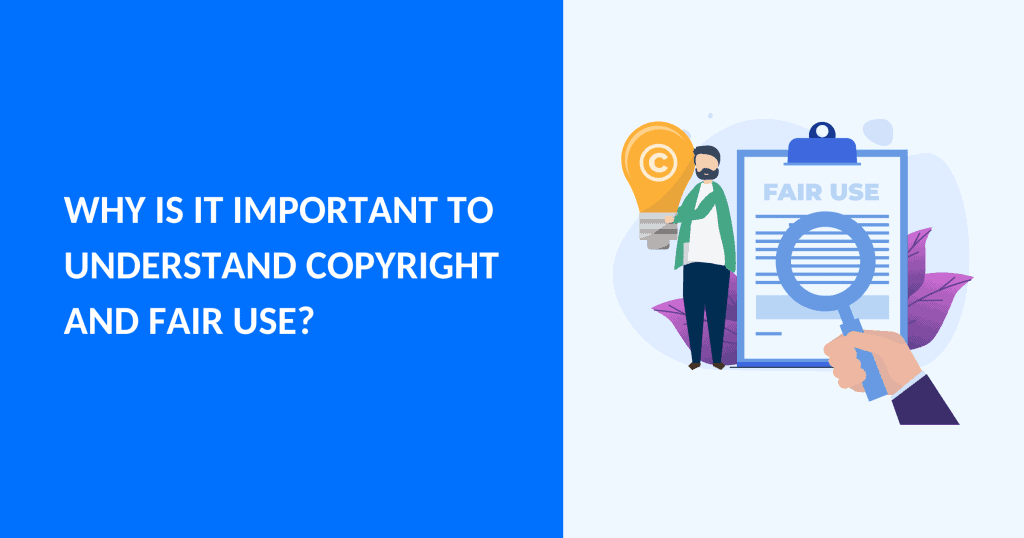In the vast universe of intellectual property and copyright law, the concept of fair use plays a pivotal role in allowing creativity, commentary, education, and research to thrive. But what exactly is fair use? How much copyrighted content can you use legally? And when does it cross the line into infringement?
Whether you’re a content creator, teacher, journalist, student, or business owner, this guide will help you understand fair use, its limitations, and how to apply it safely and ethically.
✅ What is Fair Use?
Fair use is a legal doctrine under copyright law that allows limited use of copyrighted material without the need for permission from the copyright owner, provided the usage meets specific criteria.
This concept is designed to balance the rights of creators with the need for freedom of expression, education, and innovation.
📘 Typical Situations Where Fair Use Applies
Fair use is most commonly used in the following contexts:
- Criticism and Commentary
→ e.g., analyzing a movie scene in a YouTube review - News Reporting
→ e.g., quoting a copyrighted work in a news article - Teaching and Education
→ e.g., showing a short clip in a classroom presentation - Research and Scholarship
→ e.g., citing a passage in a thesis or academic paper - Parody and Satire
→ e.g., mimicking a song for comedic or cultural commentary
⚖️ The Four Factors of Fair Use
Courts in the U.S. (and many countries with similar laws) evaluate fair use based on four key factors:
1. The Purpose and Character of the Use
Is your use transformative (adding new meaning, message, or expression)?
Is it for commercial gain or non-profit educational purposes?
- Transformative use favors fair use.
- Commercial use weighs against fair-use but doesn’t automatically disqualify it.
✅ Educational, nonprofit, or critical uses often lean in your favor.
2. The Nature of the Copyrighted Work
Is the original work factual or creative?
- Using factual or informational content (like a news report) is more likely to be fair-use.
- Using highly creative works (like songs, poems, or films) is less likely to qualify.
✅ It’s easier to justify fair use with factual content.
3. The Amount and Substantiality Used
How much of the original work did you use? And did you use the “heart” of the work?
- Using small portions supports fair-use.
- Using the core or most recognizable part may work against you—even if it’s short.
✅ Use only what is necessary to make your point.
4. The Effect on the Market or Value of the Original Work
Does your use replace or reduce the market value of the original?
- If people could use your version instead of paying for the original, it’s likely NOT fair-use.
- If your use has no real market impact, it supports fair-use.
✅ Avoid usage that competes with the original creator’s earnings or audience.
🚫 Common Misconceptions About Fair Use
Let’s bust some myths:
- “If I give credit, it’s fair-use.”
❌ Not true. Giving credit does not eliminate the need for permission. - “If I use less than 30 seconds or 10% of the work, I’m safe.”
❌ There’s no specific safe percentage or time limit that guarantees fair-use. - “It’s okay if I’m not making money from it.”
❌ Non-commercial use helps your case, but it doesn’t automatically mean it’s fair use. - “If it’s on the internet, it’s free to use.”
❌ Most online content is still protected by copyright.
🧠 Examples of Fair Use in Action
✅ Fair Use Example 1
A teacher shows a short documentary clip during a classroom lesson.
✔ Educational purpose
✔ Short portion used
✔ No impact on market
❌ Not Fair Use Example 1
A brand uses a copyrighted pop song in a product ad.
✘ Commercial use
✘ Full original work used
✘ Harms potential music licensing market
✅ Fair Use Example 2
A film critic includes short scenes while reviewing a movie on YouTube.
✔ Transformative (commentary)
✔ Limited footage
✔ Adds new perspective
🔐 How to Strengthen Your Fair Use Claim
If you believe your use qualifies, still follow these best practices:
- Use only what is necessary—don’t overuse the work.
- Add value or commentary—transform it with new meaning.
- Credit the original creator, even if not legally required.
- Avoid commercial exploitation of the copied work.
- Document your intent—in case of a DMCA complaint or legal claim.
🌍 Fair Use vs. International Law
Fair-use is a legal doctrine in the United States. Other countries have similar but not identical concepts:
- UK: “Fair dealing”
- Canada: Allows fair-use for private study, research, criticism, and review
- India: Recognizes fair-use under Section 52 of its Copyright Act
🌐 Always check local copyright laws if you’re outside the U.S.
🚫 What Happens If You Misuse Fair Use?
Using copyrighted material without proper justification—even under the assumption of fair-use—can lead to:
- DMCA takedown notices
- Content strikes on platforms like YouTube
- Monetization loss
- Lawsuits or settlements
- Permanent reputation damage
📝 Conclusion
Fair-use is a powerful tool that allows creative freedom, academic exploration, and social commentary—but it’s not a free pass to copy content without consequences. By understanding the four fair use factors, staying cautious about how much and why you use content, and being mindful of your content’s impact, you can safely create, teach, critique, and innovate.
Respect the original creators, follow the law, and use fair-use wisely.


 Watch
Watch
 CASUAL WEAR
CASUAL WEAR



[…] Misconceptions About Fair Use: Fair use is one of the most misunderstood concepts in copyright law. While it plays a critical role in enabling education, commentary, and creativity, it’s also surrounded by myths and misinformation that often lead to unintentional copyright infringement. […]